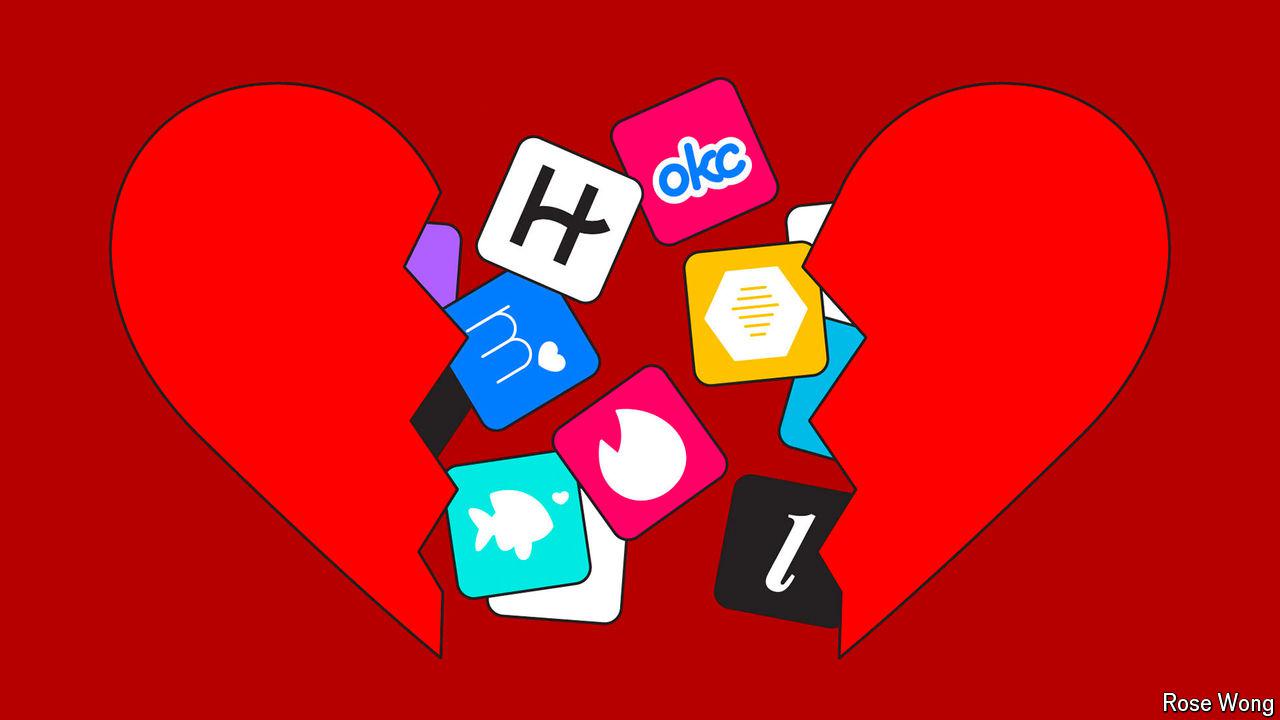
The illustration features a large, red broken heart on a dark red background. Scattered between the two halves of the broken heart are icons of various dating apps, such as Tinder, Bumble, OKCupid, Hinge, Plenty of Fish, and others.
2024-08-08 1239词 晦涩
Soon Tinder and its rivals had transformed courtship. A report published last year by the Pew Research Centre found that 30% of American adults had used an online dating service, including more than half of those aged between 18 and 29. One in five couples of that age had met through such a service. Usage surged during the pandemic, as lonely locked-down singles sought out partners. The market capitalisation of Bumble, a rival to Tinder, surged to $13bn on its first day of trading in February 2021. Later that year the value of Match Group, which owns Tinder, Hinge and scores of other dating services, reached nearly $50bn. Today roughly 350m people around the world have a dating app on their phone, up from 250m in 2018, according to Business of Apps, a research firm. In June Tokyo’s government even said it would launch a matchmaking app of its own to pair up singles in the city.
经济学人和华尔街日报的文章是会员专属
请加入会员以继续阅读完整文章
成为会员后您将享受无限制的阅读体验,并可使用更多功能
免责声明:本文来自网络公开资料,仅供学习交流,其观点和倾向不代表本站立场。